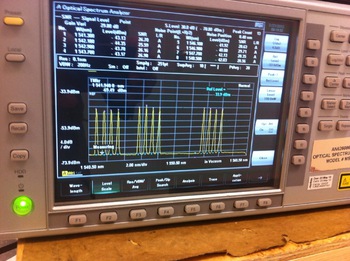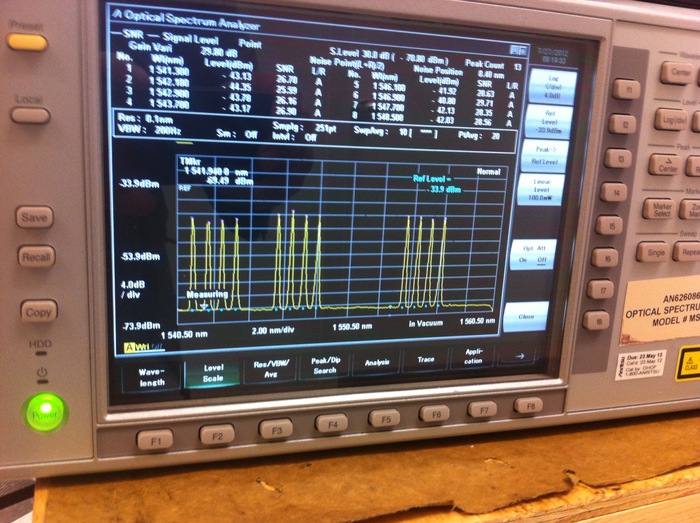OOI personnel at the shore station in Pacific City, Oregon, are actively involved in node installation. They are monitoring activities as the system is powered on and off during ship-based tests and deployments. Pete Barletto, OOI RSN Chief Operating Officer, reports from the shore station.
On July 26th at 4 pm PDT, the third Primary Node (PN1C) on the OOI RSN came to life as power was re-applied to the cable system and energized the Node while it sat on deck of the TE SubCom Dependable. The cable segment linking it to the Shore Station at Pacific City (via the first two nodes, PN1A and PN1B) and the cable segment that will link it to the fourth and final node of this string (PN1D) were connected via temporary fiber and power conductor splices. These connections allow testing of this third node and cables so that any issues can be resolved before node deployment.
The photo above shows the screen of an Optical Spectrum Analyzer (OSA) at the Shore Station. The twelve peaks are actually the twelve wavelengths coming from the three RSN Primary Nodes currently connected. Each Node has two traffic wavelengths of 10gb/s each and two wavelengths for system management.
This leg of the RSN Network is also called the Newport Line and will provide power and bandwidth to the Endurance Array coastal studies component of the OOI.
--Pete Barletto at the OOI-RSN Shore Station in Pacific City, Oregon.



